196. Four-point-one with a Capital B
When I was just getting old enough to drive, plans were announced for the widening of the Watterson Expressway from its then-two lanes in each direction to the present seventeen lanes wide at one point multi-lane highway we currently have between US 60 in the east (Shelbyville Road) and US 60 in the west (Dixie Highway). Gone would be the short entry and exit ramps which dotted the old highway, Louisville's original by-pass. As a student at the old Durrett High School, I took Drivers' Ed classes which involved entering the old highway on a very short entry ramp from Durrett Lane, the entry ramp being about 1 1/2 car lengths, with no merging lanes. I suppose Drivers' Ed is a lot easier today than it was in the days of the old I-264. The reconstruction included removing the drive-over southbound ramp from I-65 to Preston Highway, as well as the confusion where Farmdale Drive used to enter and exit the road, winding around the old Farmdale Baptist Church, which basically set in the middle of the Watterson-Preston intersection. I took my first Drivers' School in that building, after receiving a speeding ticket on Minor's Lane the day I was going to get my Senior picture taken for the yearbook. There were similarly confusing sets of co-mingled ramps where Gardiner Lane (also known then as Schuff Lane) intersected with the intersections of Poplar Level and the Watterson as well as Newburg and the Watterson, the Newburg intersection being further compounded by the presence of Robards Lane.
Since that time, the Gene Snyder (I-265/KY 841) has been completed (and rebuilt in some sections), I-65 has been rebuilt, and this summer I-64 was refurbished in the downtown area, its first update since construction began in the 1960s. For several years now, our community has been struggling to repaint I-65 over the Ohio River, although that seems to be finally getting done. The granddaddy project of them all is still a dream. Rebuilding Spaghetti Junction, erecting not one but two bridges over the Ohio River, and figuring out a way to pay for it all. Today's Courier tells us the current pricetag is $4,100,000,000.00. Four-point-one with a B. Kentucky is responsible for about 2/3 of the cost. The greatest part of that cost is Spaghetti Junction.
I have made no secret of my support for the 8664 plan which changes those figures tremendously, and to the better. 8664 calls for building the East End bridge and directing a great deal of traffic away from the city-center, around the loop connecting the I-265 in Kentucky with the I-265 in Indiana. 'Tis a consummation Devoutly to be wished. The two roads are currently separated by several miles of prime real estate on both sides of the river, as well as the river itself. My congressman, who lives near the path which would connect the two unconnected paths of the highway, hasn't been as supportive of this issue as I would have him be, especially now that he is faced with the political realities of governing as opposed to the more easy pretenses of a campaign. He has of late basically called for the building of a second downtown bridge as a first move, something most of the powers-that-be status-quo types are seeking, contrasted with the opinions of many of us who supported him who do not support the destruction of acres and acres of the downtown districts of both Louisville and Jeffersonville for the convenience of people who will never exit the highway and spend any taxable dollars in our little burg here along the Left Bank of the Ohio River near Milepost 606. It is rather hard to think of Congressman John Yarmuth as a powers-that-be status-quo type.
But there is a deeper issue here and one which even now, after the I-35 bridge collapse in Minnesota, is one no one really wants to address. That is the ongoing costs of government itself, after a generation of tax cutting eliminating a great deal of income once spent without much forethought as though it was grown on trees out in the parks. [Which reminds me of a favorite line of my grandmother's when I would buy something she thought cost too much - Be careful with your money, it doesn't grow on trees!]
As long as we keep building roads of any sort, building public parking garages, building parks and recreation facilities, building anything for the public good, along with all those up front costs comes the maintenance costs forever. This includes infrastructure upkeep of everything we (the government) possess. As we speak, a bridge built in the 1930s along E. Oak Street over Beargrass Creek is being replaced. There are bridges from this era throughout our state and nation, all of which at one point or another will need rebuilding. It isn't enough to fix things - some needed replacement.
Our government leaders are always looking for ways to hide these real costs of such items and passing those costs along to we the public. In Indiana, they leased some of their toll roads in the northern part of the state to pay for these incidental items. Their share of the $4.1 Billion for this project will largely be paid by this leasehold arrangement. Between Christmas and New Years, I had dinner with the then congressman-to-be Yarmuth who explained this may be a path Kentucky might take, explaining some other fundraising mechanisms involving the lands alongside of new highways as being controlled by the government but leased out over the long term to generate income. Of course, much of these lands were (or will be) confiscated from private owners under the laws of Eminent Domain for some public-good purpose, that of a highway and not that of a motel/truck stop who wants to lease the land from the government, thus making a profit, but returning none of that profit to the original owner. Questions of best and highest use of the land come into play, and in the end, it is simply a matter of the government serving as a landlord or land bank for private interests.
This is nothing new in Louisville. For many years, the government has been acquiring land south of Standiford Field under the Regional Airport Authority as part of the expansion of Louisville International Airport. But these lands include property as far south as South Park Road between Okolona, Fairdale, and Coral Ridge. None of this land - the old cities of Minor Lane Heights and South Park View, will ever be used as part of the airport. Rather it is being given over to private interests for financial gain. The argument was successfully made that the houses were in the flight path of the ever-expanding airport and the noise levels resulting from the expansion were not conducive to healthy living. It is a good argument. I know full-well the noise levels from the airport, having gone to school for most of my life within a 1/2 mile of the airport. But the question which arises for me is whether or not the homeowners whose homes have been taken over the last twenty-one years were (or are being) paid a figure representing the best and highest use for the property. Acres and acres of land once home to real people in places like Highland Park, Edgewood, Prestonia, and other sites east, west, north, and south of the airport now sit vacant (some for more than a decade) waiting for redevelopment by airport-related industries. And all of this expansion is within five miles of the downtown business district.
But, as is my wont, I've digressed. I started out talking about a $4,100,000,000.00 project but I intended to get to the message of when will our governments - at all levels - start taxing people enough to properly provide for the very basics of governance - streets and roads, protection, and well-being, which - in reverse order - are enumerated in one of the more well-known phrases associated with our experiment in government - life, liberty, and the pursuit of happiness. Because of tax cuts first imposed on us by Ronald Reagan, while simultaneously running up America's largest debt at the time, we no longer can afford to build new roads, have a capable and well-provided for military (and by entension police and fire brigades at the local level), or have any semblance of a reasonable and manageable healthcare system, let alone an outstanding government run system, a proposal I support. And it is becomiong obvious we aren't even willing to maintain those systems already in place without yielding to some privatization scheme, shifting the burden of providing basic funds away from the government and onto others.
Now, the bleeding-heart liberal-cum-socialist in me would say let the private sector (read: business) pay for these costs, as they are making the most profits on the backs of the middle class working public, or what's left of it. But then another left-leaning (Marxian) part of me says that all of us should bear the burden of the costs of government - people and enterprise, with each paying according to his own ability, for the common good of as many as possible. As it is, everyone is willing to shift the burden elsewhere, but eventually there is no where else to shift. When addressing the ways and means to provide for basic infrastructure, a shift isn't appropriate. We all use and/or benefit from the infrastructure in place and therefore we should all be paying for it. Legislators at every level of government struggle each year to reconcile budgets with ever-increasing costs because very few are willing to say with a straight face and in unequivocal terms that more money is needed and taxes must be raised. The big T word is tantamount to defeat at the polls in the next round of elections, which apparently outweighs any concerns for the long term good of the government to which they were elected or the people they are paid to serve.
If we are to have government, whether one's economic beliefs fall under Karl Marx, John Stuart Mill, or Jeremy Bentham - or for that matter the simple and self-defeating foolish economics of Grover Norquist, David Stockmann, or Ronald Reagan; eventually in the end, on the bottom line, the piper must be paid.















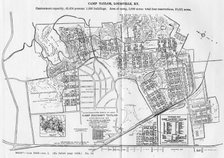
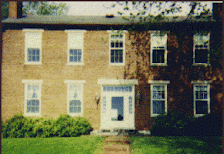

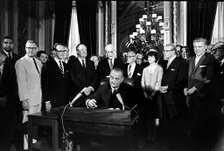

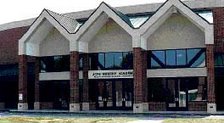


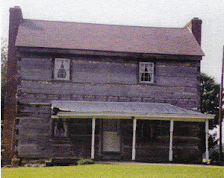
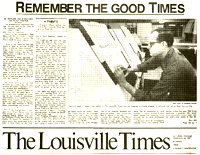

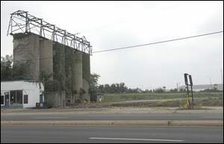
No comments:
Post a Comment